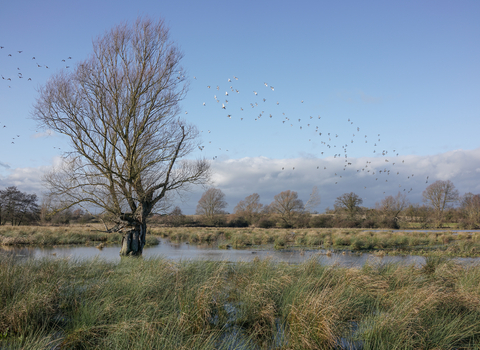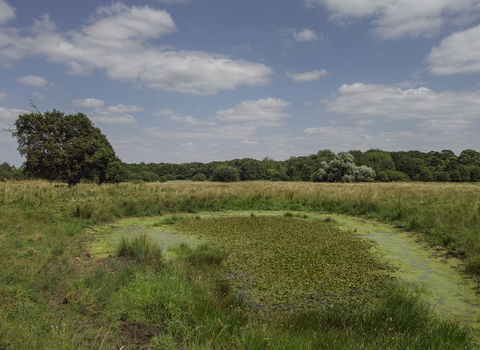
By Steve Aylward

Greenshank - Bertie Gregory/2020VISION

By Steve Aylward

Teal by Mike Johnson

Mickle Mere by Steve Aylward

By Steve Aylward
Mickle Mere Nature Reserve
Know before you go
Dogs
Assistance dogs only
When to visit
Opening times
Open at all timesBest time to visit
All year roundAbout the reserve
At 41 acres, this glistening mosaic of wet meadows, open water and sedge fringed ditches, is by no means as big as reserves such as Lackford Lakes. But what it lacks in size, it makes up for in interest, with a rich variety of birdlife visiting the site all year round.
Lying in a valley next to the River Black Bourn, part of what was once a corridor of grazing marshes running from Elmswell to Euston, the very existence of Mickle Mere is something of a fluke. When the Ixworth bypass was built in the early 1990s across the north west corner of the site, a new sluice network to connect the ditches to the river failed to work, resulting in regular floods. What was once improved grazing marsh with little wildlife interest soon became the wonderful wetland habitat we have today.
Although Mickle Mere’s creation owes much to luck, the restoration and management of the site – through the creation of islands and scrapes – has seen numbers of breeding, wintering and passage birds soar. During the winter, teal, wigeon, gadwall and shoveler are frequent visitors, while passage birds include greenshank, bar-tailed godwit, black tern and ruff. In the summer, shelduck, redshank and lapwing all breed at the reserve. The patient (and the lucky) might also get to see Mickle Mere’s reclusive otters.
The site is easily reached and always open, with parking available close by at Pakenham Water Mill. Turning right out of the car park, the entrance to the reserve is 100m away on the right hand side of the road (the hide is in view). Due to the site’s size the hide is the only way of experiencing the Mickle Mere, so don’t expect a long walk – but do expect to be won over by a genuine wildlife gem.
Mickle Mere has benefited from a gift in the will of Bill Payne.



